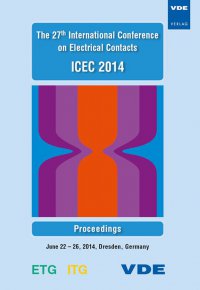Correlation between microstructural features of the melt zone and switching behavior in CuCr contact material
Conference: ICEC 2014 - The 27th International Conference on Electrical Contacts
06/22/2014 - 06/26/2014 at Dresden, Deutschland
Proceedings: ICEC 2014
Pages: 6Language: englishTyp: PDF
Personal VDE Members are entitled to a 10% discount on this title
Authors:
Klinski-Wetzel, K. von; Heilmaier, M. (Institute for Applied Materials - Materials Science and Engineering, Karlsruhe Institute of Technology, Karlsruhe, Germany)
Kowanda, C.; Mueller, F. E. H. (Plansee Powertech AG, Seon, Switzerland)
Rettenmaier, T.; Hinrichsen, H. (High Voltage Laboratories, Darmstadt University of Technology, Darmstadt, Germany)
Abstract:
It is commonly accepted that the surface melt layer on CuCr contact materials caused by the vacuum arc is determined by the chemical composition, initial microstructure and thermal loading conditions of the contact. For a given chemical composition, it seems therefore plausible that the resulting microstructure after switching should provide detailed information about the thermal loading conditions. Hence, for a pre-defined switching operation, the comparison of different microstructures present in CuCr contacts due to different compositions or processing routes may allow for an at least qualitative assessment of their switching behavior. In order to verify this hypothesis, a number of microstructural features of the surface melt layer of CuCr butt contacts of different composition after switching operations are examined. This includes size and depth, surface topography and microstructure of the melt zone. It is shown that both, the content as well as the purity of the used Cr powder, configure the observed surface topography and microstructure of the melt zone in a distinct way. It is found that heat input and removal are more homogeneous for high chromium contents and for batches produced with aluminothermic chromium.


